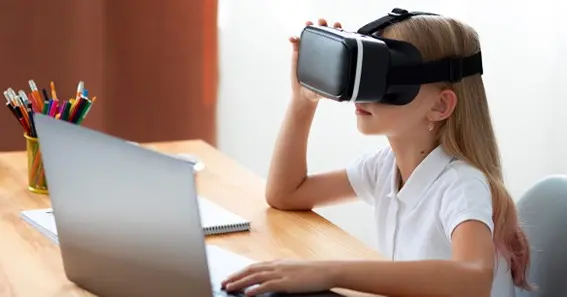We can’t ignore the fact that the sophisticated society we see now would be impossible to achieve without technological evolution. Various developers who have knowledge of how to create an online course have successfully curated amazing platforms and applications to foster learning. They have fostered innovative learning solutions that are available only with the help of a digital based education system. If innovation had not been introduced in this epidemic era of Covid-19,it would be impossible for teachers to help and educate their kids to become efficient learners at home. Furthermore, pupils can use online instructional resources to learn more successfully.
click here – Credit card loan vs SBI personal loan-Which to take when in urgent need of funds
Technology’s Crucial Functions in Education
Also Read : Credit card loan vs SBI personal loan-Which to take when in urgent need of funds
This article has been written to inform you about the critical roles of innovation and technology in education of students, part- time workers, parents, full time employees and teachers. Let’s have a look.
- Encourages the development of an effective educational system
Also Read : What Is A Vehicle Load And Why Is It Important?
Without a doubt, incorporating technology into the classroom has aided the overall development of students. Technology is a powerful tool for promoting a good academic system around the world. Technology’s largest important responsibilities in education include making education more attainable, engaging, and pleasurable. Students’ skills and knowledge improve as a result of technological developments in schooling.
- Students Benefit Significantly From Technology
Is anyone else pondering how crucial technology is in education? As a result, let me notify you that according to a poll, online learning technology helps the majority of pupils enhance their scores. Furthermore, students can easily learn further and faster from a variety of resources using technology-based E-learning rather than relying on a school or an instructor.
- Better coordination and collaboration are needed.
We are all aware that the advancement of technology has enhanced cooperation and interaction. Educational technology has also improved cooperation and interaction between teachers and pupils, as well as between parents and teachers, parents and students, students and classmates etc. Educational technology has also improved cooperation and interaction between teachers and pupils, as well as between parents and teachers, teachers and colleagues. Teachers can connect with students to answer questions and improve the effectiveness of e-learning. In the virtual classroom, technology allows for one-on-one engagement.
- Educators are offered more sources
Teachers can employ a variety of digital technologies to expand learning opportunities for pupils using sophisticated modern educational technology. Teachers can increase their teaching skills using e-learning solution technologies. Teachers can use video classes, microlearning, beautiful infographics, and other forms of technology to effectively instruct students. Teachers can also engage pupils by administering online assessments and offering other courses.
- Self-paced learning
Technology plays a vital part in education since it allows students to learn at any point of time and from any geographical location. One can learn in their own time thanks to the digital E-learning approach. Students can use online instructional apps to play, pause, and replay complicated topics until they understand the concept. The digital E-learning technique allows people to learn at their own pace. These various platforms successfully manage how to sell courses online which are exclusive and student-driven.. Students use these interactive educational apps to watch, stop, and rewind difficult concepts until they get them.
- More Online assessment-based learning options
Several universities are now using online Project-Based Education instead of pen-and-paper assignments. Edtech solutions have made Project-Based Learning considerably more accessible to students. Presentations can now be created using microsoft ppt, online docs, google slides, and other applications. Students use online Project-Based Learning to use their knowledge and abilities to complete an assignment.
click here – 7 ways to clean the bedroom of your rental flats
- Personalized Learning Opportunities
The use of technology in education is not limited to efficient learning; students may also have their own personalised learning opportunities. Students can better customise their learning by having additional resources/material available to them 24 hours a day, seven days a week. We all understand that not all pupils study at the same pace, thus personalised learning is a necessity. Personalize learning, usually referred to as self learning, can help people maximise the amount of material they consume based on their abilities.
- Provide Stuff for Effective Problem Solving
Well, the best way to study without any reservations is through current clever classes. Every concept has video modules to assist you eliminate your doubts. So, if you have any worries about any topic, simply browse through the Problem Solving material.
